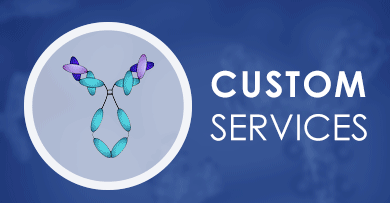+ Filter
 Loading...
Loading...

Plau
 Loading...
Loading...Anti-Plau ProductsBackground
Anti-Plau Products
-
- Derivation: Mouse
- Species Reactivity: Human
- Type: Mouse IgG2a
- Application: WB, IHC
-
- Species Reactivity: Human
- Type: Mouse IgG
- Application: WB, ELISA, FuncS
-
- Species Reactivity: Mouse
- Application: ELISA, WB
-
- Species Reactivity: Human, Mouse, Rat
- Type: Rabbit IgG
- Application: WB, IHC
- Human Anti-PLAU Antibody, mRNA (TAB-712CL-mRNA)
-
- Species Reactivity: Human
- Mouse Anti-PLAU Antibody (clone mAb-112), mRNA (PABL-306-mRNA)
-
- Species Reactivity: Human
-
- Species Reactivity: Human
- Type: Rabbit IgG
- Application: ELISA, IHC
-
- Species Reactivity: Human
- Type: Mouse scFv
- Application: WB, ELISA, FuncS
-
- Species Reactivity: Human
- Type: Mouse Fab
- Application: WB, ELISA, FuncS
- Mouse Anti-PLAU Recombinant Antibody (clone 6A7C6) (VS7-0425-WR624)
-
- Species Reactivity: Human
- Type: Mouse IgG1
- Application: FC
- Mouse Anti-PLAU Recombinant Antibody (clone 6B6A3) (VS7-0425-WR625)
-
- Species Reactivity: Human
- Type: Mouse IgG1
- Application: WB, ICC, FC
View More Products
Can't find the products you're looking for? Try to filter in the left sidebar.Filter By Tag
More Infomation
Our customer service representatives are available 24 hours a day, from Monday to Sunday. Contact Us
For Research Use Only. Not For Clinical Use.
Background
This gene encodes a serine protease involved in degradation of the extracellular matrix and possibly tumor cell migration and proliferation. A specific polymorphism in this gene may be associated with late-onset Alzheimers disease and also with decreased affinity for fibrin-binding. This protein converts plasminogen to plasmin by specific cleavage of an Arg-Val bond in plasminogen. Plasmin in turn cleaves this protein at a Lys-Ile bond to form a two-chain derivative in which a single disulfide bond connects the amino-terminal A-chain to the catalytically active, carboxy-terminal B-chain. This two-chain derivative is also called HMW-uPA (high molecular weight uPA). HMW-uPA can be further processed into LMW-uPA (low molecular weight uPA) by cleavage of chain A into a short chain A (A1) and an amino-terminal fragment. LMW-uPA is proteolytically active but does not bind to the uPA receptor. Alternatively spliced transcript variants encoding different isoforms have been found for this gene.

